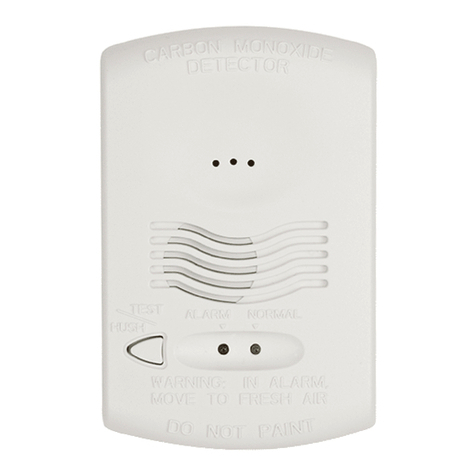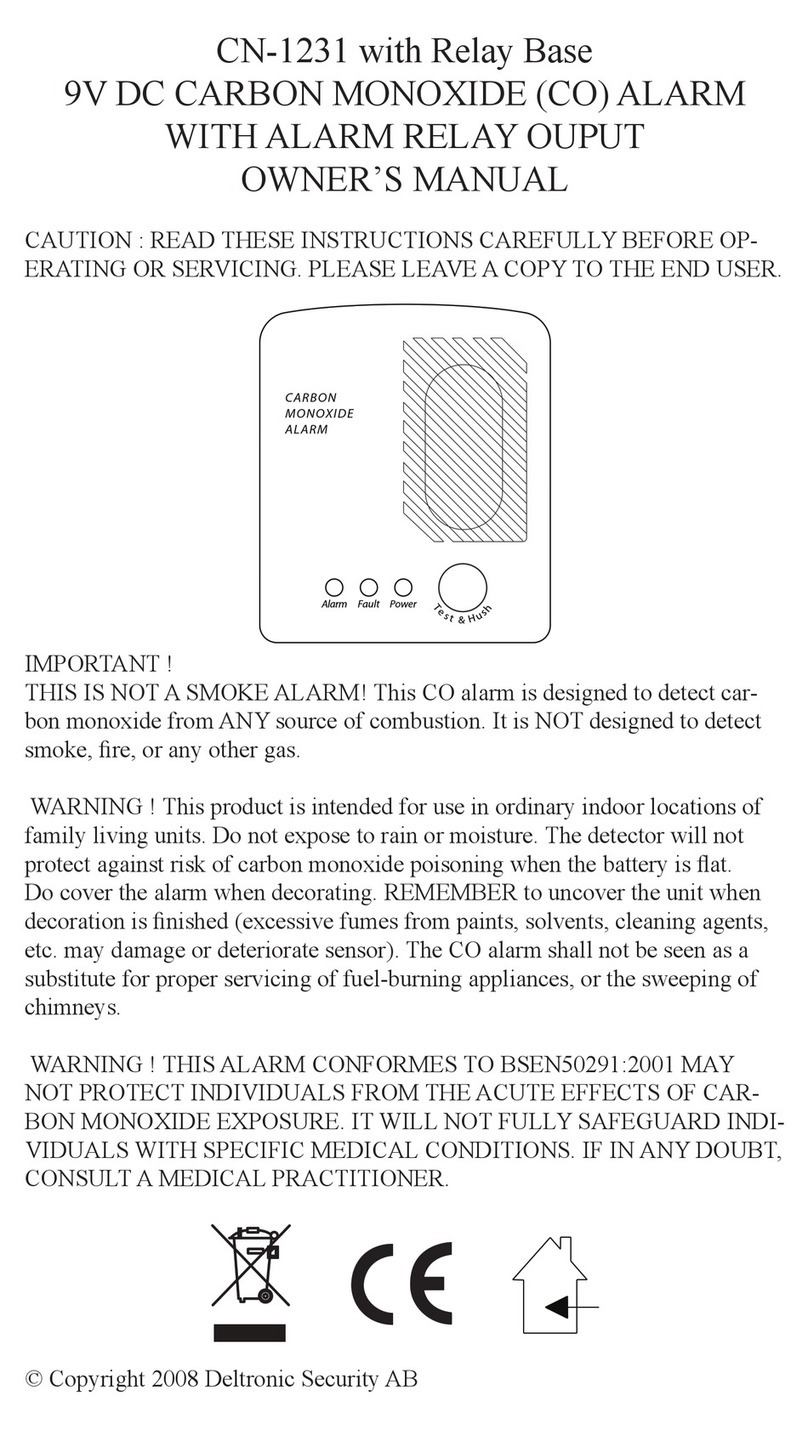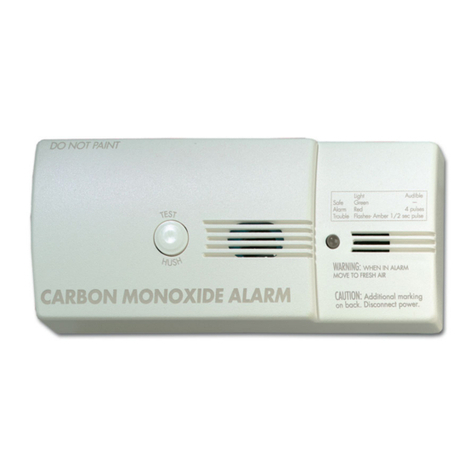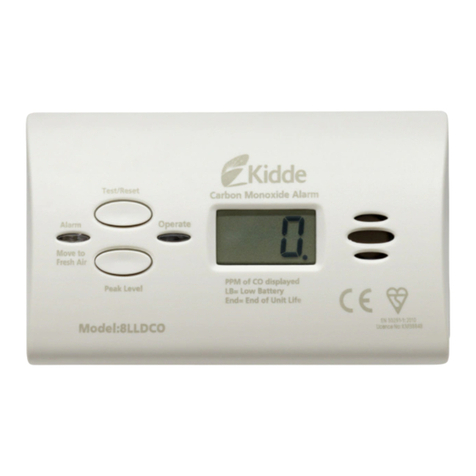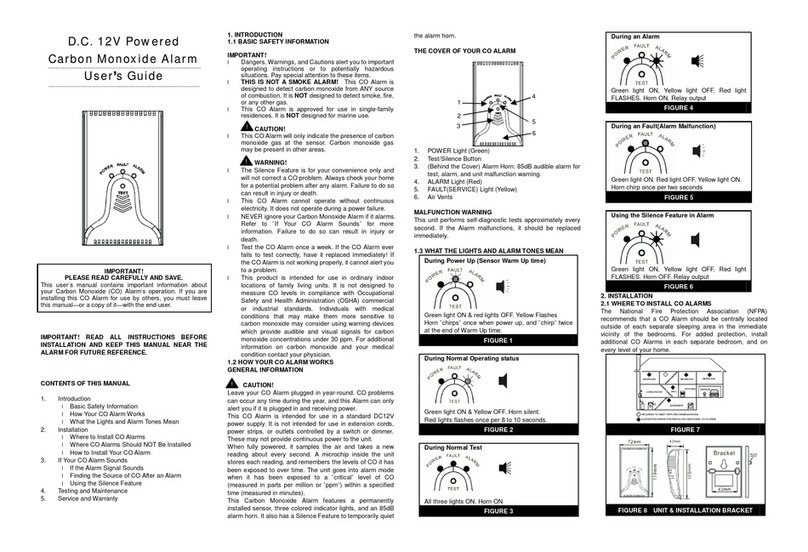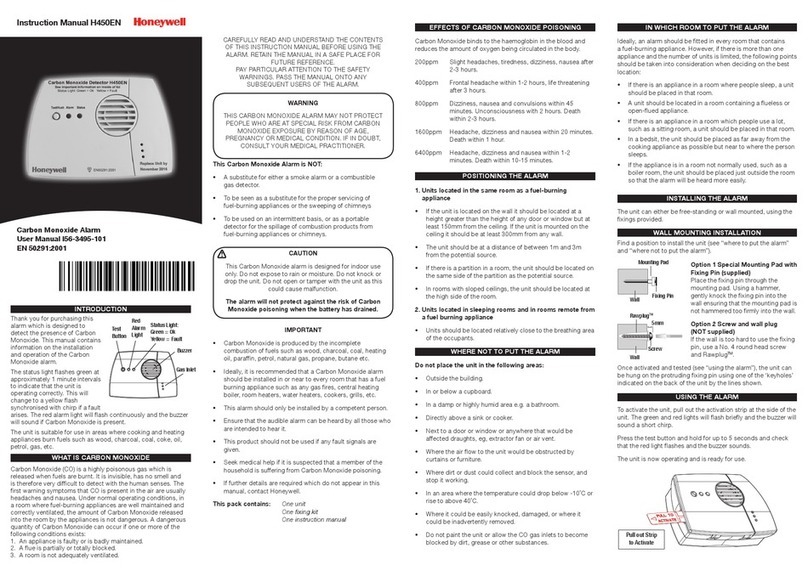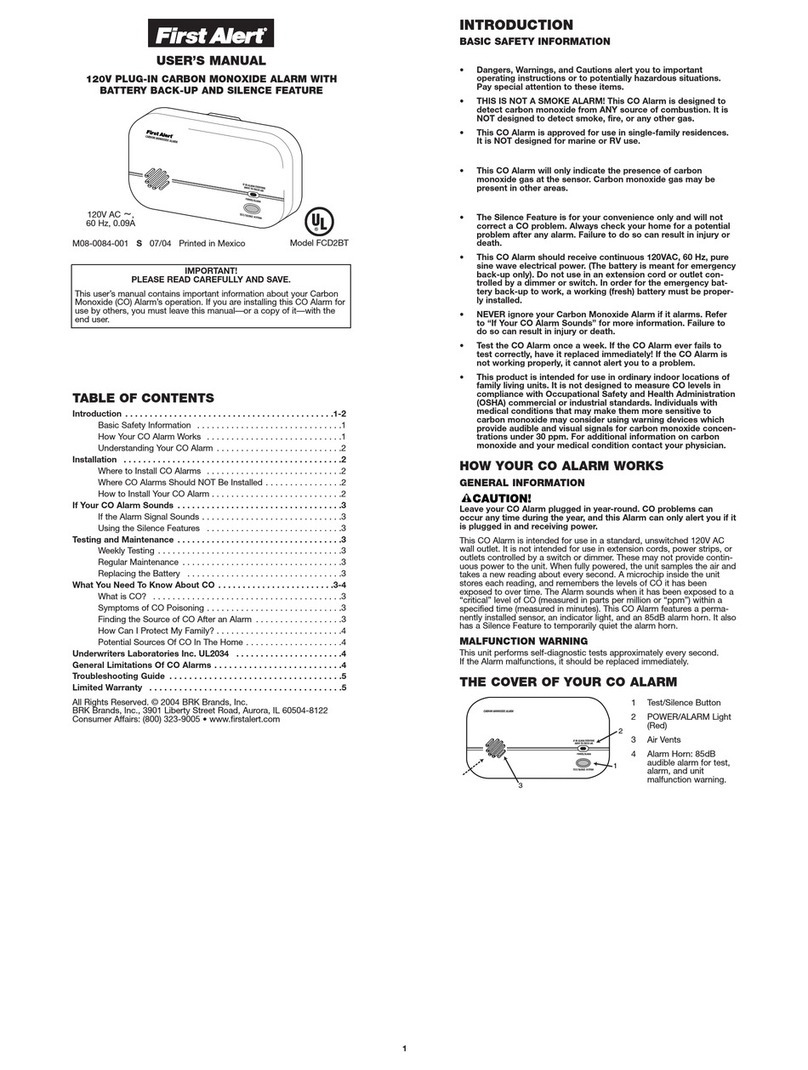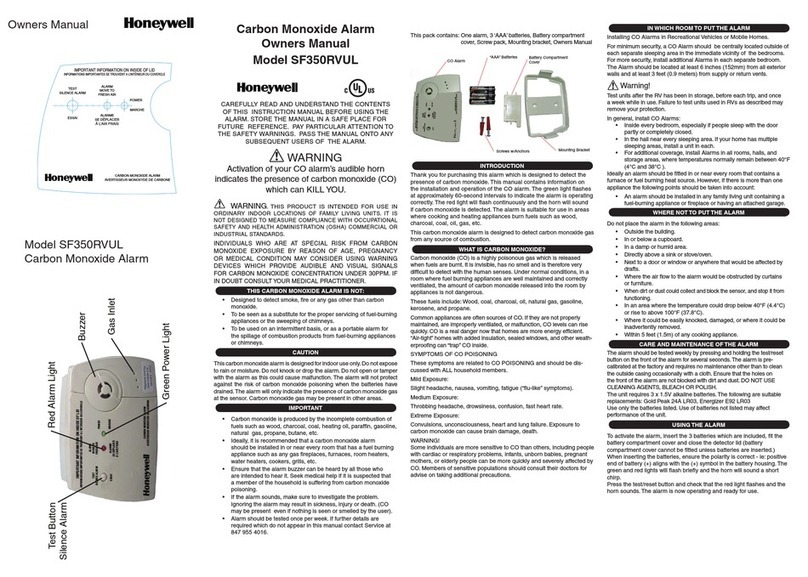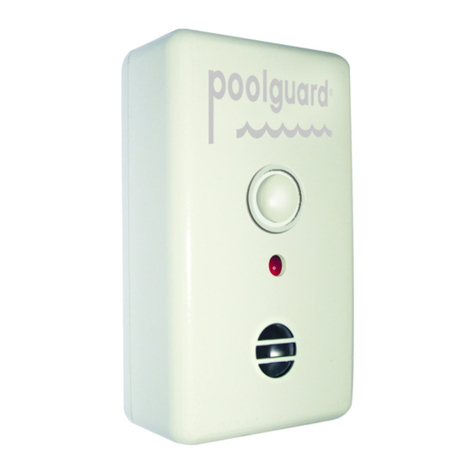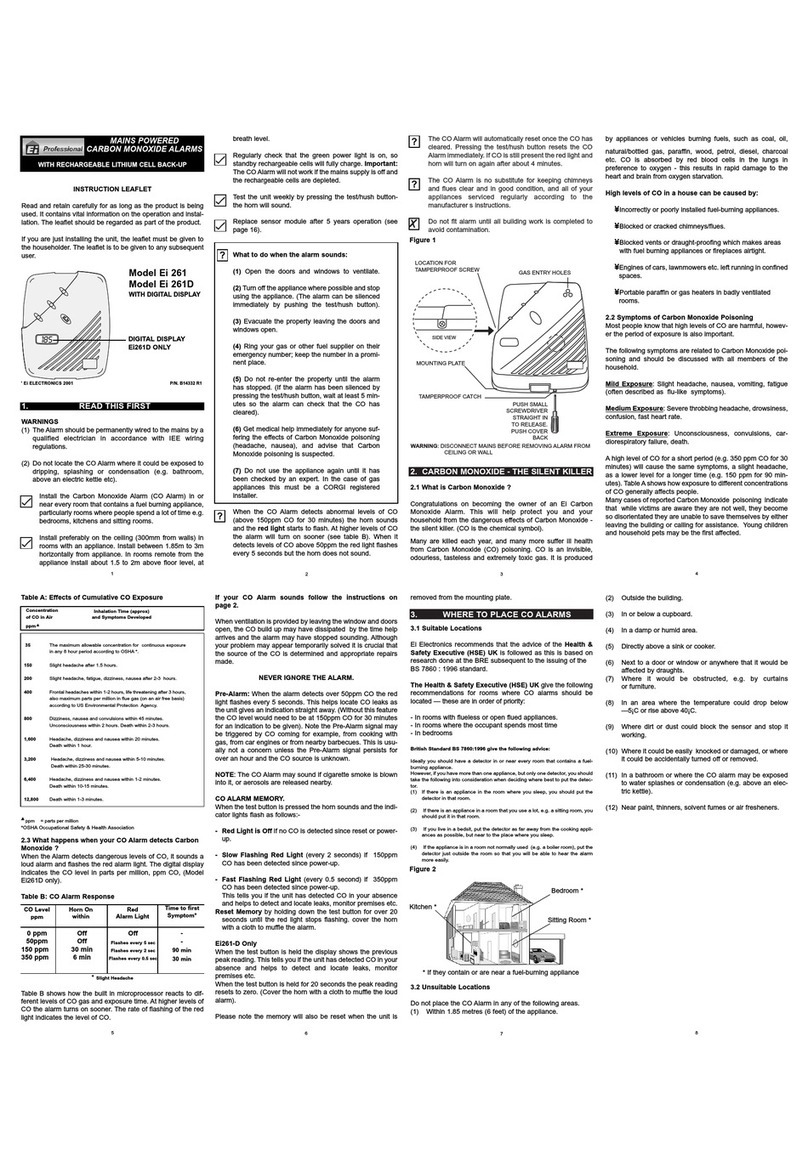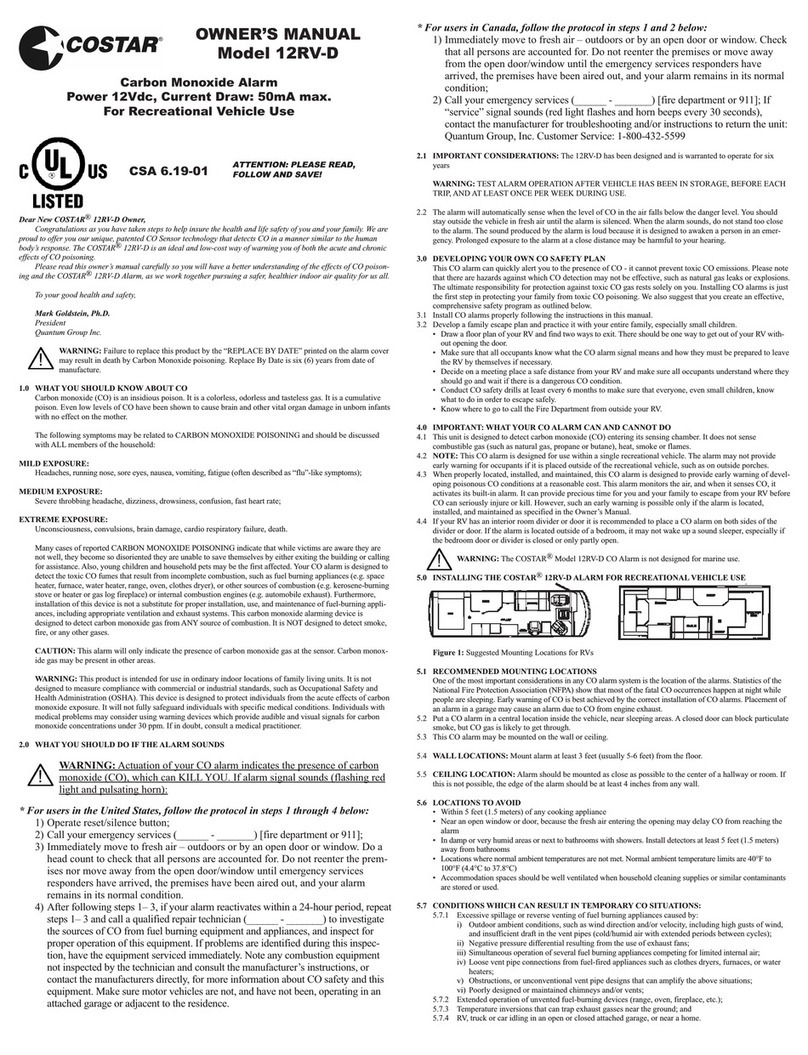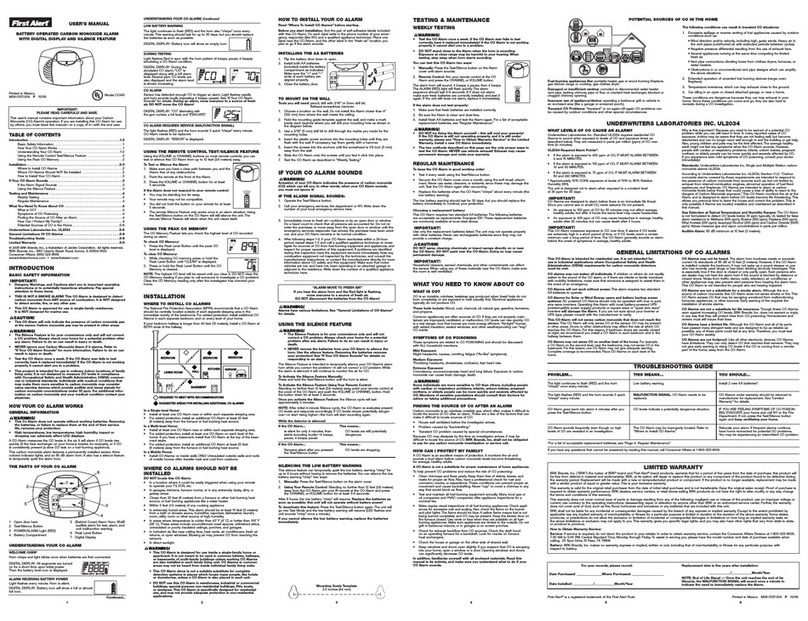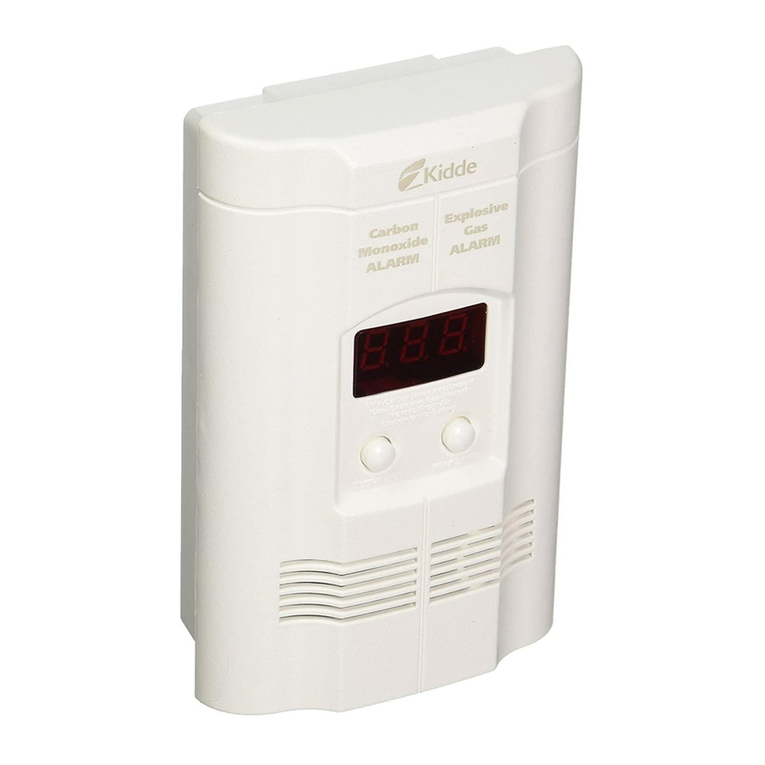
2.3 Symptoms of Carbon Monoxide Poisoning
Table A
Concentration
of CO in Air Inhalation Time (approx) and Symptoms Developed
ppm
35 The maximum allowable concentration for continuous exposure in any
8 hour period according to OSHA
*.
150 Slight headache after 1.5 hours.
200 Slight headache, fatigue, dizziness, nausea after 2-3 hours.
400 Frontal headaches within 1-2 hours, life threatening after 3 hours, also maximum
parts per million in flue gas (on an air free basis) according to US Environmental
Protection Agency.
800 Dizziness, nausea and convulsions within 45 minutes. Unconsciousness within
2 hours. Death within 2-3 hours.
1,600 Headache, dizziness and nausea within 20 minutes. Death within 1 hour.
3,200 Headache, dizziness and nausea within 5-10 minutes. Death within 25-30 minutes.
6,400 Headache, dizziness and nausea within 1-2 minutes. Death within 10-15 minutes.
12,800 Death within 1-3 minutes.
The following symptoms may be related to CARBON MONOXIDE POISONING and should be discussed
with ALL members of the household:
Mild exposure: Headaches, running nose, sore eyes, often described as “flu” -like symptoms;
Medium exposure: Dizziness, drowsiness, vomiting;
Extreme Exposure: Unconsciousness, brain damage, death.
Many cases of reported CARBON MONOXIDE POISONING indicate that while victims are aware they
are not well, they become so disoriented they are unable to save themselves by either exiting the
building or calling for assistance.
ppm = parts per million *OSHA Occupational Safety & Health Association
